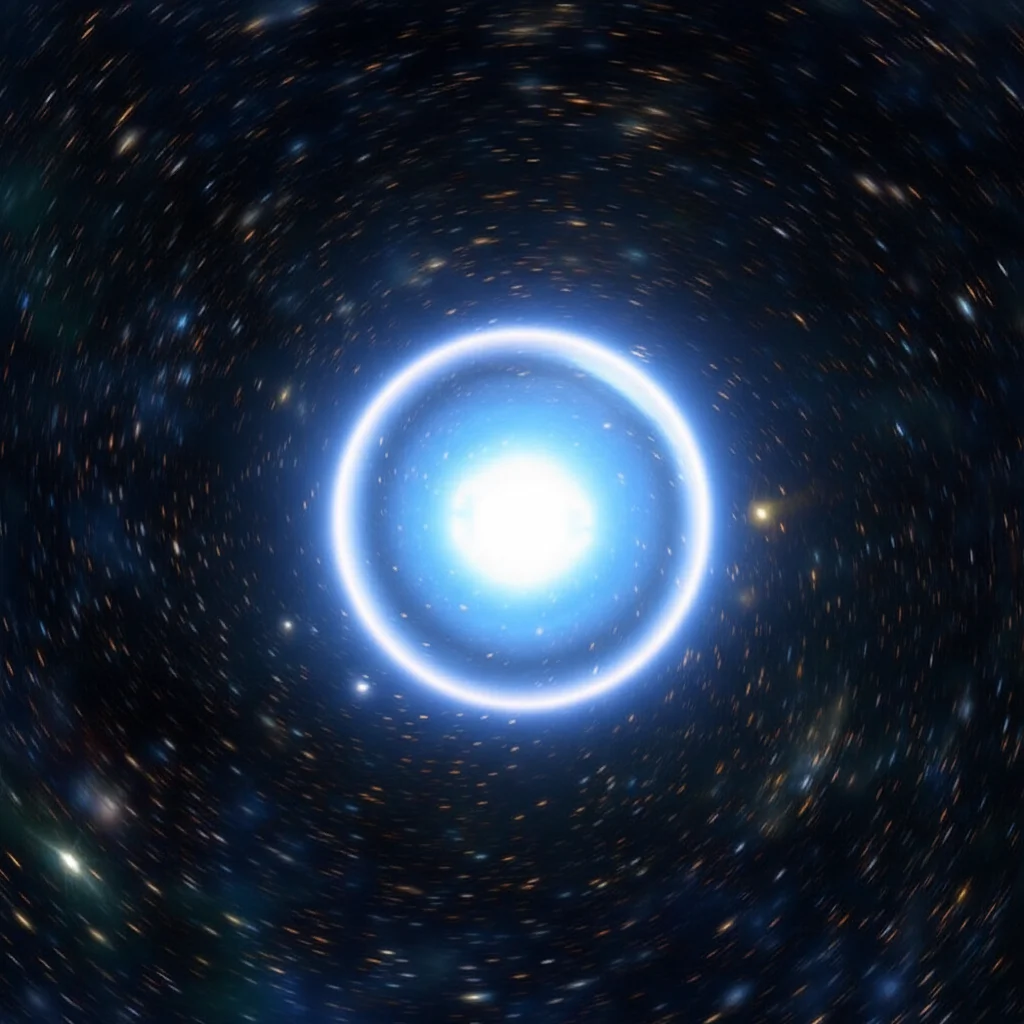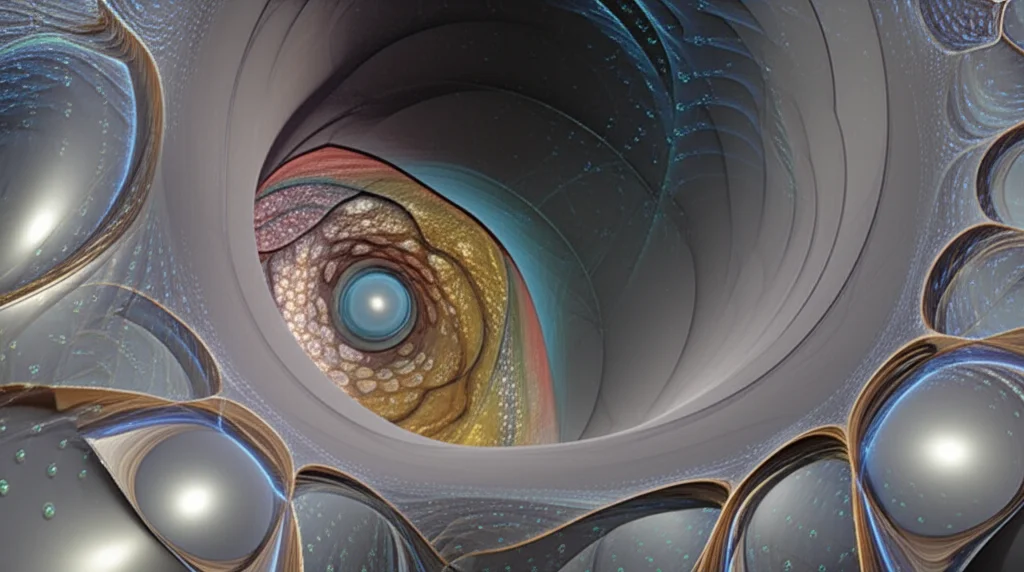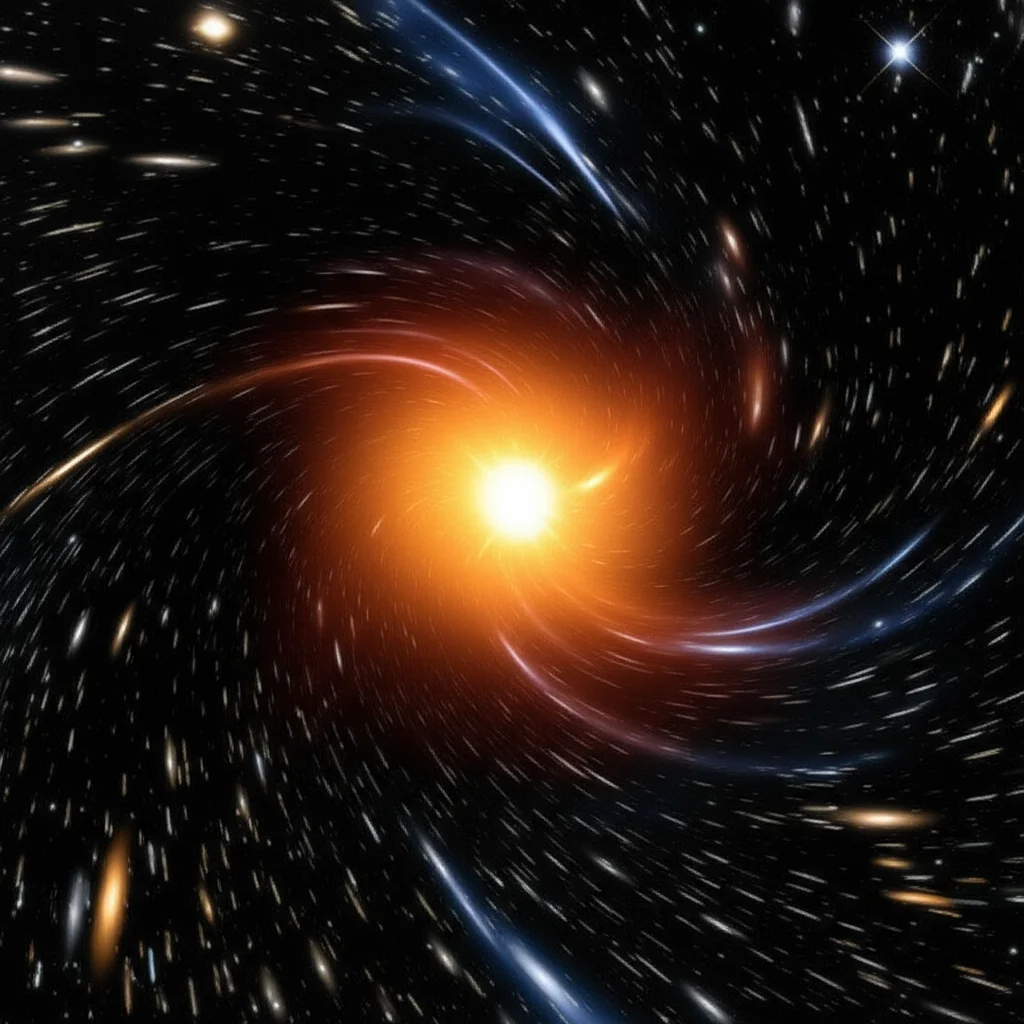Unlocking the Secrets of Charged Stars in Higher Dimensions: A Journey into EGB Gravity
Exploring the Cosmos Beyond Einstein
Hey there, fellow universe enthusiasts! Have you ever looked up at the night sky and wondered what incredible secrets are hidden within those twinkling lights? Well, I’ve been diving deep into some pretty fascinating stuff about what makes up those super dense objects out there, like neutron stars or white dwarfs. You see, while Einstein’s theory of General Relativity is absolutely brilliant and has passed tons of tests, it hits a bit of a snag when we talk about things like the universe expanding faster and faster without any obvious cause (hello, dark energy and dark matter!).
This is where things get exciting! To try and figure out these cosmic puzzles, physicists have come up with some cool alternative ideas. One way is to mess with the ‘stuff’ in the universe (that’s the dark matter/energy route), and another is to tweak the rules of gravity itself. And that’s exactly what we’re talking about today – playing with gravity!
Enter Einstein-Gauss–Bonnet Gravity
Among the many ‘modified gravity’ theories out there, one that’s been getting a lot of buzz is called Lovelock gravity. Think of it as a natural upgrade to Einstein’s gravity, especially when we consider universes with *more* than the usual four dimensions (three space, one time). The cool thing about Lovelock gravity is that it keeps the equations of motion manageable – they don’t get too wild with higher derivatives, which is a good sign that the theory is well-behaved.
Our particular focus is on a special case of Lovelock gravity called Einstein–Gauss–Bonnet (EGB) gravity. This theory pops up naturally in some versions of string theory, which is one of our best shots at understanding gravity at a quantum level. So, studying EGB gravity, especially around super-dense objects like stars, is a way to see if these fancy pants theories hold up in extreme conditions.
Now, here’s a quirky bit: in our familiar 4D universe, the Gauss–Bonnet part of the theory doesn’t actually *do* anything dynamically; it’s just a topological term. But step into 5D, 6D, or higher, and suddenly it springs to life, changing how gravity works! While there have been recent attempts to make EGB gravity work non-trivially in 4D, our work here sticks to the dimensions where it naturally plays a role: 5 and 6 dimensions.
The Challenge: Finding Exact Solutions for Charged Stars
So, what were we trying to do? We wanted to find new, *exact* mathematical descriptions (called solutions) for charged, perfectly spherical (isotropic) stars within this 5D and 6D EGB gravity framework. We also assumed a simple relationship between the star’s internal pressure and density, known as a linear barotropic equation of state (EoS), like $p = gamma rho$. This is a common way to model the ‘stuff’ inside a star.
Why is finding *exact* solutions such a big deal? Well, the equations in these modified gravity theories are incredibly complex, often non-linear. Getting a precise, non-approximate solution is like finding a cosmic needle in a haystack! Exact solutions give us a pure, unadulterated look at how spacetime behaves in these scenarios, without any approximation errors that numerical methods might introduce. They are super valuable tools for understanding gravity in astrophysics and cosmology.
Historically, finding physically realistic exact solutions has been tough, even in standard Einstein gravity. Many proposed solutions don’t actually represent a star that could exist – they might have weird properties like negative density or pressure increasing outwards. Adding the complexity of EGB gravity *and* electric charge makes it even harder.

Our Approach: Making Smart Choices
To tackle this, we focused on static, spherically symmetric charged fluid distributions in 5D and 6D EGB gravity. The field equations describing this setup are a system of coupled differential equations. We used a clever coordinate transformation trick that had been helpful in standard gravity before. This transformed our complex master field equation into a form that, while still tricky (often an “Abelian differential equation of the second kind” – sounds complicated, right? It is!), might be solvable if we made the right assumptions.
Since we had more unknowns than equations, we needed to make some choices to ‘close’ the system. We used the linear EoS ($p = gamma rho$) as one condition. For the second condition, we decided to pick specific, well-behaved forms for one of the ‘metric potentials’ – the functions that mathematically describe the geometry of spacetime around and inside the star. This is a standard technique, but finding choices that actually lead to solvable equations *and* physically realistic stars is the real art!
Diving into 5D Solutions
We explored a few potential choices for the metric functions. For example, we tried setting one potential to a constant, which in standard gravity relates to isothermal distributions. While this led to a hypergeometric equation, finding simple, physically relevant solutions was difficult, except for some cases that turned out to be unrealistic (like $E^2 = -2p$, which… no).
We also tried setting another potential to a constant, which relates to the old static Einstein universe model. This gave us an implicit solution, but it was hard to isolate the potential to build a full model for all possible $gamma$ values in the EoS. However, for specific values, like $gamma=0$ (dust) or $gamma=-1$ (dark energy-like), we recovered known solutions, but they weren’t ideal for modeling typical stars.
The breakthrough came when we tried potentials that varied with the radial coordinate. Specifically, setting one potential proportional to the radial coordinate (related to spacetimes admitting conformal motions) led to a solvable equation for the other potential when the EoS parameter was $gamma = 1/2$.

This gave us a *new*, explicit exact solution in 5D EGB gravity for a charged isotropic fluid with $p = rho/2$. We also found another new explicit solution for $gamma=1$ (a stiff fluid) when assuming a different potential form ($y=sqrt{x}$). These were exciting discoveries because they were *exact* and potentially physically relevant!
Exploring 6D Solutions
We then turned our attention to the 6D case. The equations are even more complex here! Again, we used the linear EoS and tried specifying potential forms. Setting a potential to a constant didn’t yield physically viable results for stars – it either led to non-physical conditions or recovered the uninteresting constant-density or flat space solutions.
However, similar to the 5D case, when we let a potential vary with the radius, we found success for specific EoS parameters. For instance, setting one potential proportional to the radius led to a solvable equation when $gamma = 1/3$ (like radiation). This gave us a new explicit exact solution in 6D EGB gravity for a charged isotropic fluid with $p = rho/3$. We also found another new explicit solution for $gamma=1$ (stiff fluid) when using the $y=sqrt{x}$ potential form.
The Reality Check: Are These Models Plausible?
Finding a mathematical solution is only half the battle. The big question is: can these solutions actually represent a real star? To check this, we put our new solutions through a rigorous ‘physical plausibility’ test. This involves checking several conditions:
- Is the energy density and pressure positive everywhere inside the star?
- Do the density and pressure decrease as you move outwards from the center?
- Does the pressure drop to zero at the star’s boundary (where it meets the vacuum outside)?
- Are the energy conditions satisfied? (These basically say that energy and momentum behave reasonably – no weird negative energy or faster-than-light energy flow).
- Is the speed of sound inside the star less than the speed of light? (Causality!)
- Is the star stable against collapse (Chandrasekhar condition)?
- Does the star’s total mass and radius satisfy certain limits (Buchdahl condition)?
We also had to make sure our interior solutions smoothly connected (matched) to the known exterior solution for a charged object in EGB gravity (the Boulware–Deser–Wiltshire solution) at the star’s boundary.
To see if our solutions passed these tests, we used graphical analysis. We plotted the density, pressure, electric field, energy conditions, mass, and compactification parameter (mass-to-radius ratio) against the radial coordinate for various parameters of our models.
And guess what? For carefully chosen values of the parameters (which we found through some empirical fine-tuning – basically, trying values until the plots looked right!), our new exact solutions *did* satisfy all these physical requirements throughout the interior of the star! The density and pressure were positive and decreased outwards, the pressure vanished at a boundary, the energy conditions and causality were met, and the stability criteria were satisfied.
One thing to note is that some of our solutions had a singularity right at the very center. While this isn’t ideal, it’s a common feature in many exact solutions. However, in the case of a charged star, the electrical repulsion might prevent matter from ever reaching the absolute center, or perhaps the core is made of different, non-singular stuff. So, while present, it doesn’t necessarily rule out the model entirely, especially if it’s describing a region away from the core or a multi-layered star.
The Takeaway
So, what did we achieve? We successfully found new, explicit exact solutions for charged isotropic fluid spheres with a linear barotropic equation of state in 5D and 6D Einstein–Gauss–Bonnet gravity. These solutions, which are expressed in simple mathematical functions (elementary functions), are incredibly valuable because they provide precise insights into the behavior of gravity and matter in extreme environments and higher dimensions within this modified gravity theory.
By analyzing these solutions graphically, we demonstrated that they can indeed represent physically plausible models for compact stars, provided the parameters are chosen appropriately. This work adds another cool piece to the complex puzzle of understanding the structure of relativistic compact objects and exploring the implications of modified gravity theories like EGB gravity, especially when charge is involved and extra dimensions might play a role. It’s a small step, but an important one, in our quest to map the extreme corners of the universe!
Source: Springer







